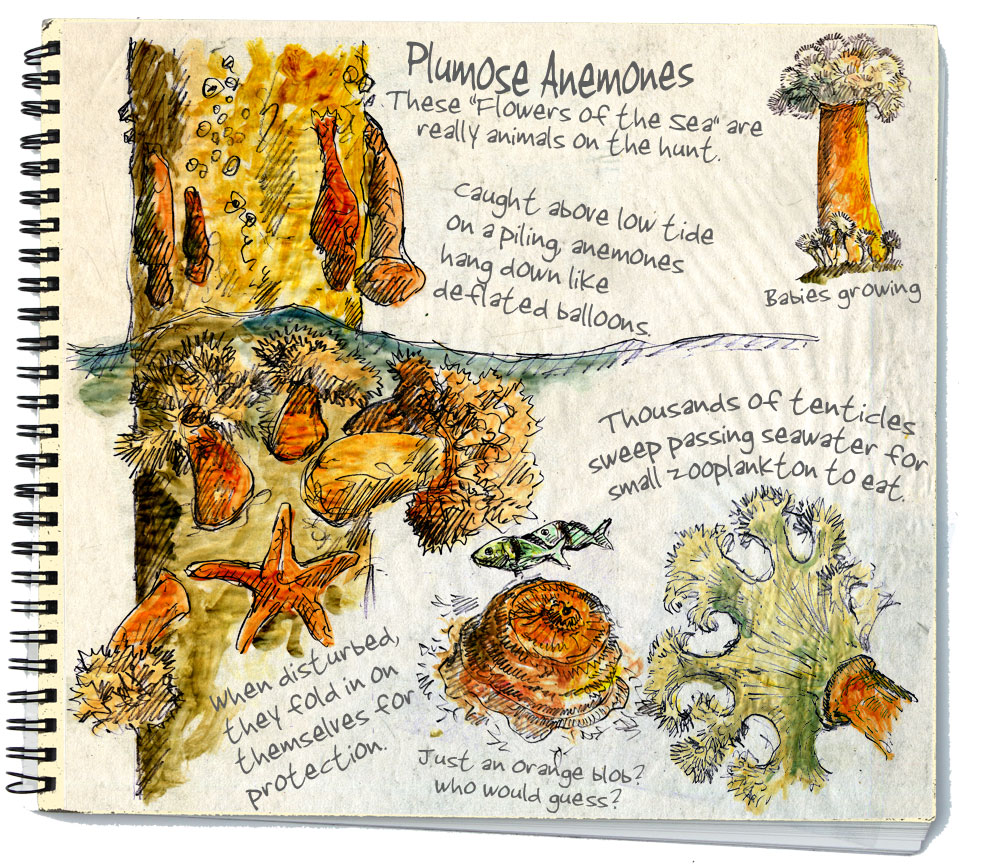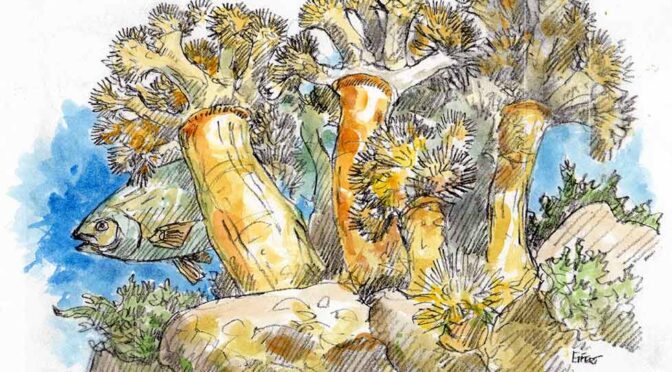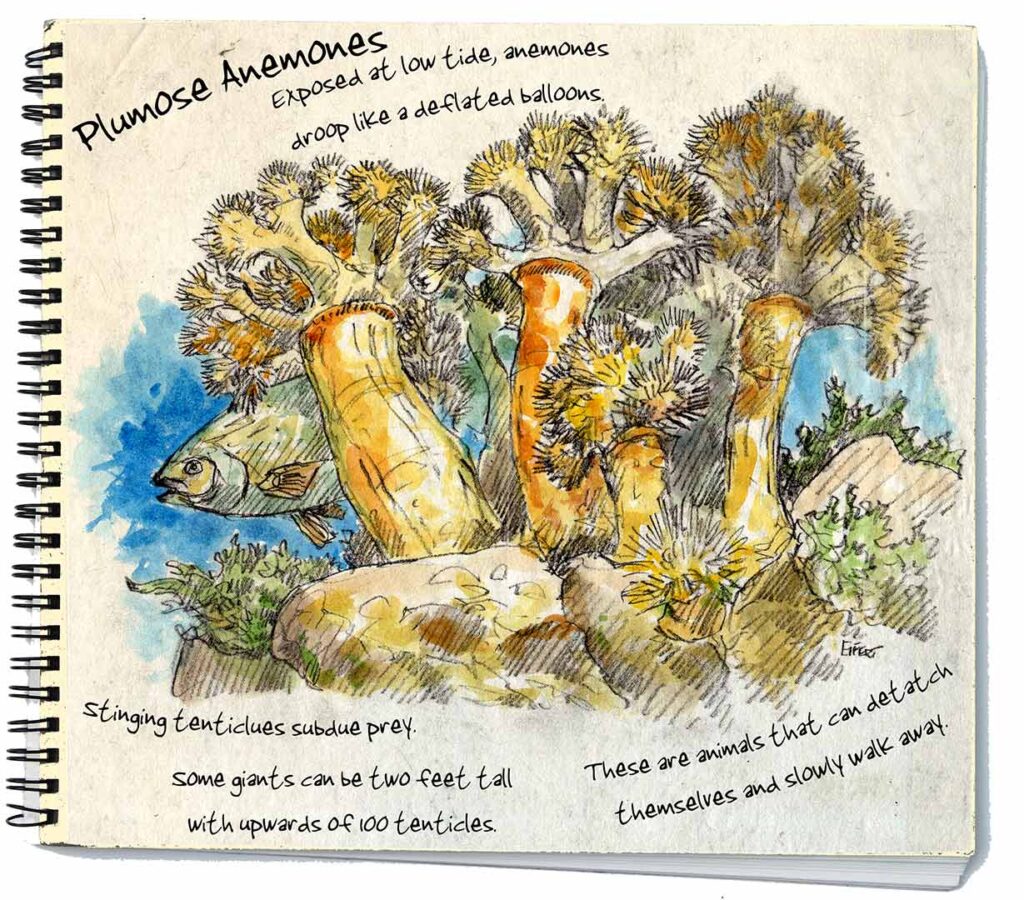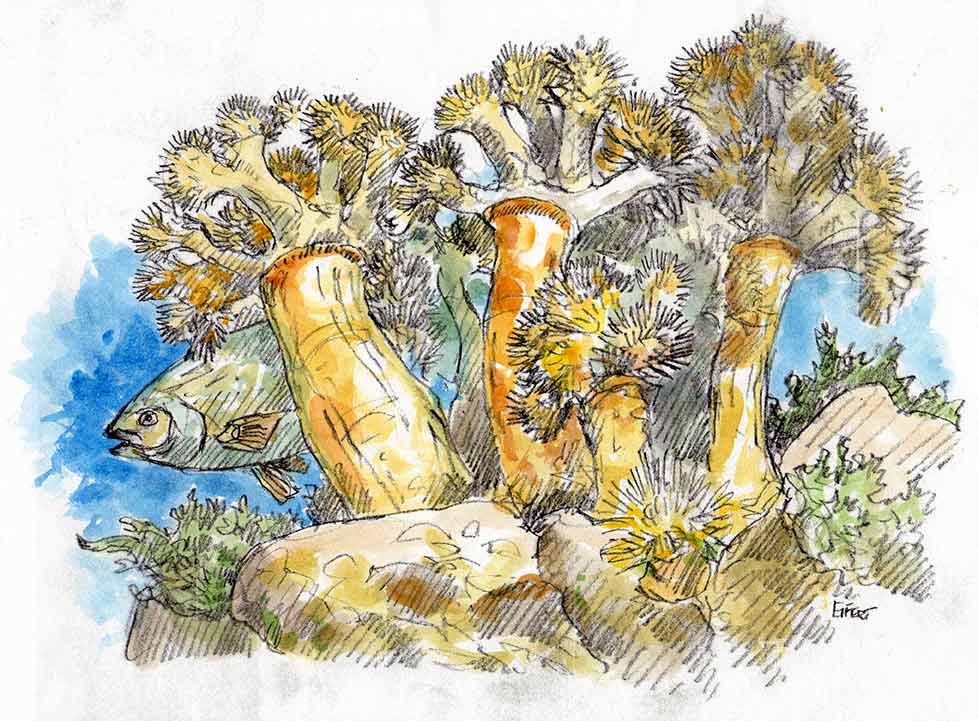I’m a bit late on posting some of my 48 North magazine stories. Just too many interesting paintings happening that always seem more current. This one was the story pages back in August, so that meant I painted it in June. I promise, I’ll catch up to current soon.
And here’s just the art. It’s watercolor and pencil, brightened up with the computer before assembling the story with a readable font. I’ve tried this with my own lettering but it’s just not nearly as readable. 48 North magazine is here.
I have over 70 stories in past issues and you can read them on my website here.

I did another plumose anemone story before this one. Here it is from 2027,
And here’s the story:
Plumose Anemone
Look down the closest piling at low tide and chances are good you’ll see these animals. Yes, they animals, animals that look like flowers. Animals with deadly stinging tentacles that can move around and even grab, kill and eat small fish. There are many species of anemones in the Salish Sea, some tiny inch-wide creatures that congregate in colorful crowds, others can be two feet tall. The plumose averages a respectful 12” tall and can have up to 100 tentacles that sting and grab any morsel that floats by. The meal, often microscopic, is then transferred down into a waiting mouth, throat and stomach to be consumed. Remember Little Shop of Horrors? This is an oceanic equivalent, except there are millions of them under our docks and floats. Low tide might expose them to air, in which case they sort of fold up like a deflated balloon and wait for the incoming tide.
Anemones can move about, leaving one spot behind when it senses danger or a lack of food. When it does, it simply walks off, but leaves behind some anemone DNA and from this a new anemone will grow. In summer, it also creates and releases sperm and eggs that drift around until ‘things happen’. This animal is well-armed, as I said. It possesses two types of stinging tentacles, the most common is for stinging prey, a second set is for defense. These can elongate 2 or 3 times their length and reach out to attach anything passing by – think stinging nettles on your favorite river trail. Others from inside the body can be shot through the body column or mouth to do the same attacking. Basically, this beautiful animal may look great but it’s a killer if you’re a small witless creature swimming past. So, here’s the drill: at low tide, put your stomach on the dock, peep down the piling well and have a look for yourself. You won’t regret it.
Thanks for reading this week – and the entire year for that matter.
Larry Eifert
Here’s my Facebook fan page. I post lots of other stuff there.
Click here to go to our main website – with jigsaw puzzles, prints, interpretive portfolios and lots of other stuff.
Nancy’s web portfolio of stunning photography
And here to go to Virginia Eifert’s website. Her books are now becoming available as Amazon Kindle books.


